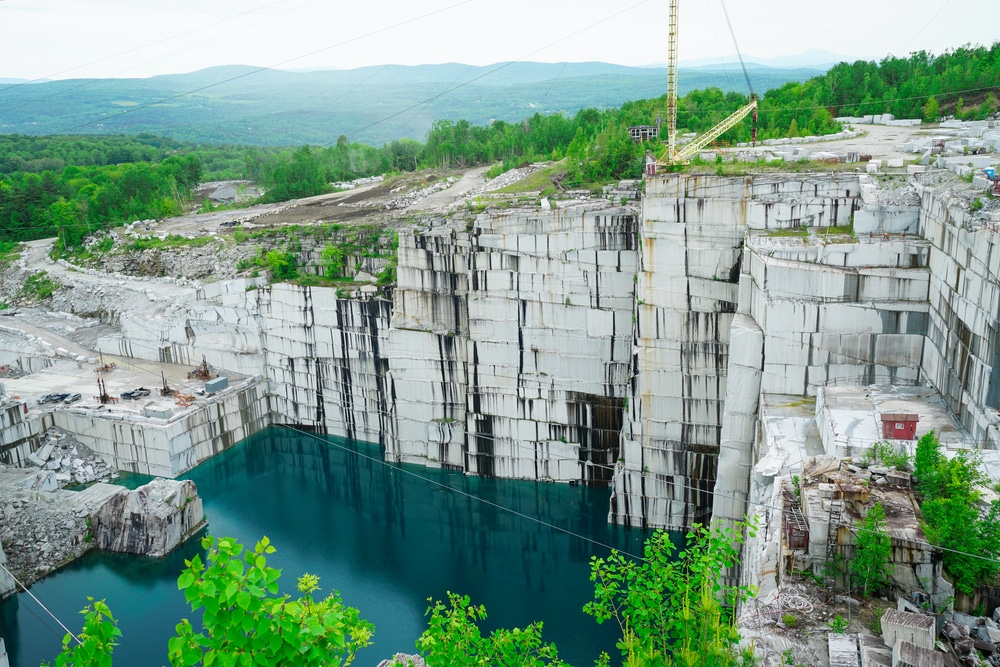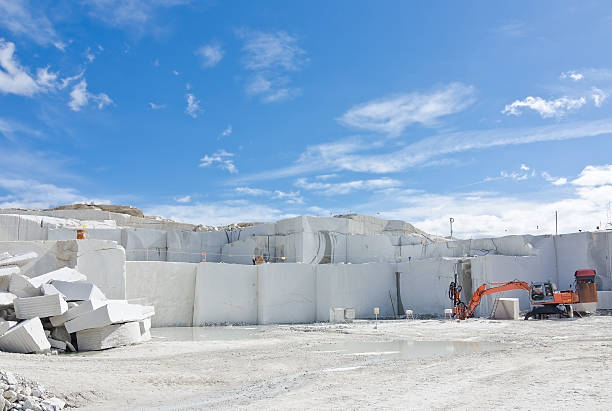A Trip Through Granite Quarries in South Africa: Introduction Nature's Artistry
A Trip Through Granite Quarries in South Africa: Introduction Nature's Artistry
Blog Article
Unearthing the Rich Background and Lasting Practices of Granite Quarrying
As we base on the precipice of discovering the detailed tapestry of granite quarrying, a trip with time discloses not simply the physical act of removing rock but likewise the social and historic relevance woven right into the very textile of this method. From the old origins that laid the structure for modern-day quarrying techniques to the sustainable methods that are shaping the future of this sector, each chisel mark on granite surfaces narrates waiting to be uncovered (granite quarries in south africa). The tradition of granite quarrying extends much past mere removal; it is a testimony to human resourcefulness, durability, and the long-lasting attraction of this marvelous stone
Ancient Origins of Granite Quarrying
Dating back to old people, the method of quarrying granite has been an essential component of human background and architectural development. The earliest evidence of granite quarrying days back to ancient Egypt, where huge pyramids and elaborate sculptures were crafted from this sturdy rock. The Egyptians used primitive devices to draw out granite blocks from quarries, showcasing the value of this product in their significant buildings.
Moving on in history, the Greeks likewise made significant contributions to the quarrying of granite. The Greeks utilized granite in different architectural wonders, such as temples and statues, showing their ability in shaping and sculpting this hardy stone. The Romans better improved the techniques of quarrying granite, using innovative tools like blades and hammers to essence and form granite for their renowned structures.
Via the centuries, the method of quarrying granite has advanced, with contemporary technologies boosting performance while keeping the timeless appeal of this natural rock - granite quarries in south africa. From old worlds to modern contractors, the legacy of granite quarrying remains to form our globe
Advancement of Quarrying Methods
The evolution of quarrying techniques has been noted by a continuous progression in the direction of greater effectiveness and precision in removing granite. From the fundamental approaches used by our forefathers to the advanced innovations used in modern quarrying operations, the industry has undergone significant improvements. Early quarrying strategies entailed manual labor with basic devices such as knives, hammers, and wedges to extract granite blocks from the earth. As people proceeded, strategies like fire-setting and primitive dynamites were presented to help with the removal procedure.
In more recent times, the introduction of equipment transformed the quarrying sector, enabling quicker removal prices and enhanced productivity. Technologies such as diamond wire saws, high-pressure water jets, and pneumatically-driven drills have ended up being common in modern quarries, permitting accurate cutting and lowered waste. Innovations in computer-controlled devices and 3D modeling have optimized quarrying procedures, leading to very little ecological impact and enhanced sustainability practices. As the demand for granite remains to increase, the advancement of quarrying techniques continues to be integral to meeting sector needs successfully and sustainably.
Cultural Value of Granite
Granite holds an extensive cultural relevance throughout numerous human beings due to its enduring presence in building masterpieces and admired monuments. From the stunning pyramids of Egypt to the complex carvings of the Angkor Wat holy place in Cambodia, find more granite has actually been a material of selection for revealing splendour and long life in cultural heritage. In old Rome, granite columns decorated holy places and public buildings, representing strength and permanence. The cultural relevance of granite extends past its physical features; it personifies resilience, security, and timelessness, making it a sign of withstanding traditions and customs.

Lasting Practices in Quarrying
Amidst the abundant background of granite quarrying and its social value exists an expanding focus on sustainable practices within the sector. As environmental awareness and issues concerning resource depletion have enhanced around the world, the quarrying market has increasingly embraced lasting methods to lessen its effect on the environment and bordering neighborhoods.

In addition, improvement and rehabilitation of quarry websites post-extraction are important to sustainable practices. By bring back quarried locations to an all-natural or beneficial state, such as producing wildlife habitats or leisure spaces, quarriers can counter the ecological footprint of their operations and contribute favorably to the neighborhood environment.
Heritage of Granite Quarrying
With a historical backdrop steeped in craftsmanship and commercial progress, what sustaining impact has granite quarrying left on the landscape of modern-day culture? The tradition of granite quarrying transcends plain removal practices; it has actually shaped building marvels, city landscapes, and cultural heritage worldwide. The durable nature of granite has actually made it a preferred choice for monuments, structures, and framework, standing as a testimony to the skill and creativity of quarry employees throughout generations.
In addition, the financial footprint of granite quarrying can not investigate this site be forgotten. The industry remains to supply employment possibility and drive local economic climates in regions where granite extraction is prevalent. It has additionally stimulated technical innovations in quarrying strategies and devices, leading to a lot more reliable and lasting methods.
In terms of sustainability, the heritage of granite quarrying consists of efforts to minimize ecological impacts through recovery projects and accountable source management. By balancing economic passions with ecological stewardship, the market strives to guarantee that future generations can proceed to profit from this long-lasting all-natural resource.
Verdict

Report this page